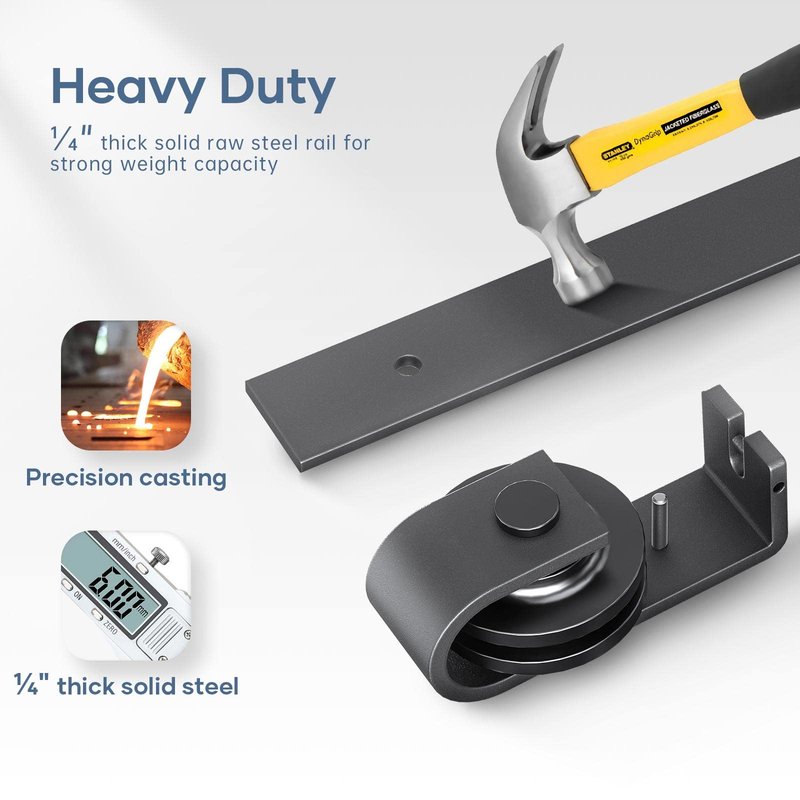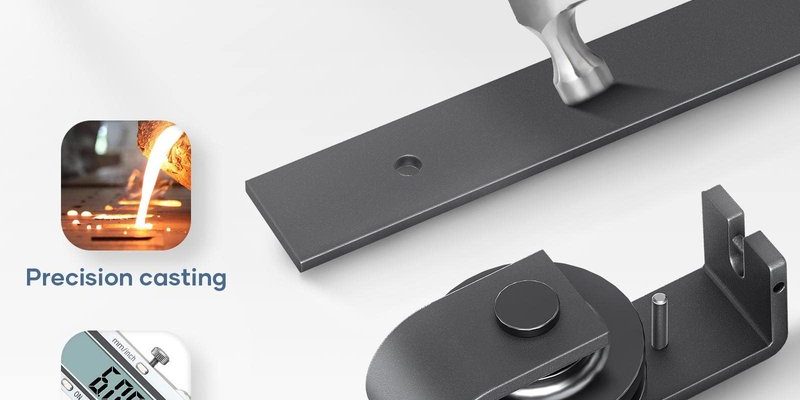
Now, if you’re new to this, don’t worry, I’ve got you covered. We’ll break down everything you need to know about rollers, what makes them great for heavy doors, and even some top brands to consider. By the end, you’ll feel confident in picking the right set for your space.
Understanding the Importance of Rollers
When you think about sliding barn doors, it’s easy to focus on the door itself—its size, finish, and style. But the rollers are just as crucial. They are responsible for guiding the door smoothly along the track. Heavy doors, in particular, require a sturdier roller system to handle the weight without wobbling or getting jammed. It’s like choosing the right wheels for a mini-van versus a sports car—one needs to support extra weight without sacrificing performance.
So, why does the roller matter? A good roller will not only ensure that your door slides effortlessly, but it can also minimize wear and tear. This means fewer trips for maintenance and a longer lifespan for both your door and your hardware. Honestly, who doesn’t want that?
Types of Rollers Available
There are several types of rollers designed for heavy sliding barn doors. Understanding these will help you make an informed choice:
- Ball-bearing Rollers: These employ ball bearings to create a smooth glide, reducing friction and making it easy to open and close heavy doors. They’re often found in higher-end systems.
- Polypropylene Rollers: If you’re looking for durability, these rollers made from high-impact plastic can handle a lot of weight. Their resistance to moisture makes them a great choice for humid areas.
- Steel Rollers: These are the go-to for maximum strength. Steel rollers can support the heaviest of doors but may require more maintenance to prevent rust.
When selecting a type, consider factors like the weight of your door, your budget, and how much maintenance you’re willing to do. It’s a bit like picking between a sports car, a family SUV, or a rugged truck.
Top Brands for Heavy-Duty Rollers
Not all rollers are created equal, and some brands consistently deliver quality and durability. Here are a few you might want to check out:
- Johnson Hardware: Known for high-quality sliding systems, they offer an array of rollers that can support heavy doors with ease.
- Sliding Barn Door Hardware: This brand specializes in barn door kits, including robust rollers praised for their functionality and sleek design.
- Rustic Hardware: If you like a rustic touch, their rollers not only look good but are also known for their strength, perfect for heavier doors.
When considering a brand, it helps to read reviews and maybe even see them in action. Sometimes, visualizing their movement can give you a better feel for whether they’ll work for your needs.
Measuring Your Door for the Right Roller
Getting the right size roller is as important as the type. If the rollers are too small or improperly fitted, your door won’t glide properly, which can lead to frustration (and let’s be honest, nobody wants a stubborn barn door). Here’s how to measure correctly:
1. Door Thickness: Measure the thickness of the door. Most barn doors range from 1 to 2 inches thick. Make sure the rollers you choose are compatible with your door’s thickness.
2. Weight Capacity: Check the weight of your door. You’ll need rollers that can handle this weight, ideally with a bit of a buffer to account for wear over time.
3. Track Length: Measure the track where the door will slide. This will help ensure your rollers fit perfectly and operate smoothly without obstruction.
By following these steps, you can avoid common pitfalls and ensure your setup works just as it should.
Installation Tips for Barn Door Rollers
Installing barn door rollers can seem daunting, but it doesn’t have to be. With the right approach, you can do it yourself, saving you a trip to the handyman. Here are some steps to guide you:
1. Follow the Manufacturer’s Instructions: Each roller system may have specific requirements. Start by laying out all parts and reading the instructions thoroughly.
2. Install the Track Level: Use a level to ensure the track is straight. A crooked track can lead to a lot of issues down the line—like unsightly gaps or a door that gets stuck.
3. Attach Rollers to the Door: Secure the rollers on the top of the door. Make sure to follow the provided instructions carefully, as improper installation can cause the door to slide unevenly.
4. Hang the Door on the Track: With the help of one or two friends, hang the door on the track. This may take a few tries to get just right, but ensure it glides smoothly.
Taking the time to install properly will pay off in the long run. No one wants to deal with a door that jams every time you use it!
Troubleshooting Common Roller Issues
Even the best rollers can face issues over time. Here’s a quick guide to some common problems and how to fix them:
- Door Sticking: If your door is sticking, check if the track is clear of debris. Sometimes, a quick cleanup is all you need to get things moving again.
- Noise: Loud rolling can be a sign that your rollers are wearing out. Consider applying a silicone lubricant to keep them quiet. Avoid grease, as it can attract dirt.
- Misalignment: If your door isn’t aligned properly, check that the rollers are securely fastened and the track is level. You may need to adjust depending on how the door hangs.
Knowing how to troubleshoot these issues can save you a lot of frustration. Plus, maintaining your rollers will extend their life, keeping your barn door functional and beautiful.
The Final Touches
Choosing the best rollers for heavy sliding barn doors is about combining the right type, size, and brand. Always ensure the rollers can support the weight of your door and are easy to install and maintain. By following the tips shared, from measuring your door to troubleshooting common issues, you’ll set yourself up for a successful installation.
Remember, the right rollers can completely transform your barn door experience. With smooth sliding and a stylish look, you’ll wonder why you didn’t make the switch sooner. Happy sliding!
